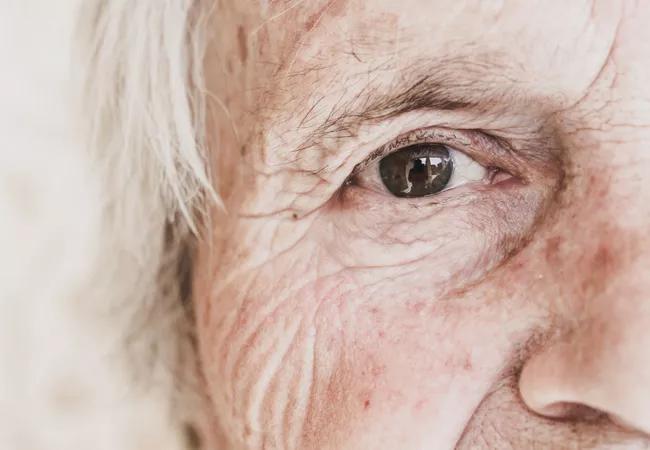Faricimab every 16 weeks offers similar benefits as aflibercept every eight weeks

A new type of therapy offers patients with neovascular age-related macular degeneration longer lasting results than current therapies. This is welcome news for a population of patients for whom frequency of treatment can be inconvenient if not an outright barrier.
Advertisement
Cleveland Clinic is a non-profit academic medical center. Advertising on our site helps support our mission. We do not endorse non-Cleveland Clinic products or services. Policy
In a phase 3 clinical trial, researchers compared aflibercept, the current standard of care, with new drug faricimab. The study found that faricimab offered similar benefits at 16-week intervals as aflibercept given at eight-week intervals.
“There is a lot of unmet need with regard to therapies for age-related macular degeneration,” says retina specialist Rishi P. Singh, MD, of Cleveland Clinic’s Cole Eye Institute. “Treatments are high frequency, and patients continue to lose vision, despite having frequent injections. I think ophthalmologists will see faricimab as a potential new market leader, with superior durability.”
Dr. Singh presented findings from the phase 3 study at the American Academy of Ophthalmology 2021 meeting. He said he hopes faricimab will receive FDA approval early next year, with the drug becoming available for clinical use by the end of 2022.
Faricimab uses a new pathway to treat age-related macular degeneration. Current medications work by blocking vascular endothelial growth factor (VEGF). Faricimab combines the anti-VEGF method of action with an additional molecule that blocks angiopoietin-2 (Ang-2), a different growth factor that drives vascular destabilization.
“It’s an anti-Ang-2 drug and an anti-VEGF drug combined on a single platform,” says Dr. Singh. “I think the dual method of action makes sense because the anti-VEGF therapy alone seems insufficient for many patients. This gives us an alternative to that pathway.”
Under the current standard of care, most patients need to receive injections directly into their eyes every eight to nine weeks in order to maintain results and prevent vision loss.
Advertisement
In addition to the hardship of frequent injections, patients lose vision quickly if they miss treatments. An earlier study by Dr. Singh’s team found notable vision loss in patients who missed treatments as a result of the COVID-19 pandemic.
“We need more durable treatments,” says Dr. Singh. “Obviously, if you have to come in for injections once a month or every two months versus every four months or every six months, it can make a huge difference in your quality of life.”
Faricimab also had a superior drying effect compared to aflibercept, reducing retinal fluid, especially in patients with diabetic macular edema, Dr. Singh noted.
The multi-institute study involved 1,329 patients at sites around the world. After 48 weeks, 80% of the faricimab patients were at dosing intervals greater than 12 weeks, and 45% were at 16-week intervals.
Faricimab had no significant side effects compared to the standard of care.
Advertisement
Advertisement

Registry data highlight visual gains in patients with legal blindness

Prescribing eye drops is complicated by unknown risk of fetotoxicity and lack of clinical evidence

A look at emerging technology shaping retina surgery

A primer on MIGS methods and devices

7 keys to success for comprehensive ophthalmologists

Study is first to show reduction in autoimmune disease with the common diabetes and obesity drugs

Treatment options range from tetracycline injections to fat repositioning and cheek lift

The advanced stage of diabetic retinopathy is among the most challenging for retinal surgeons